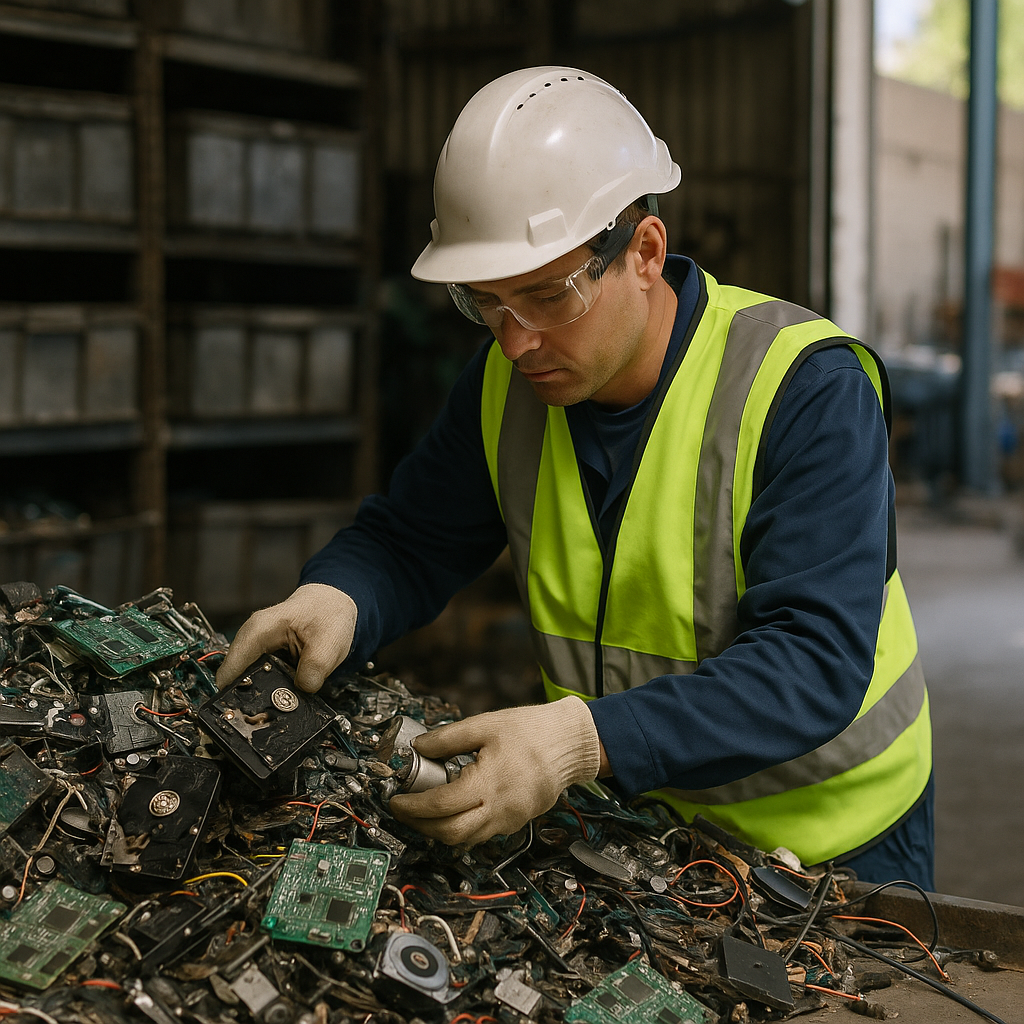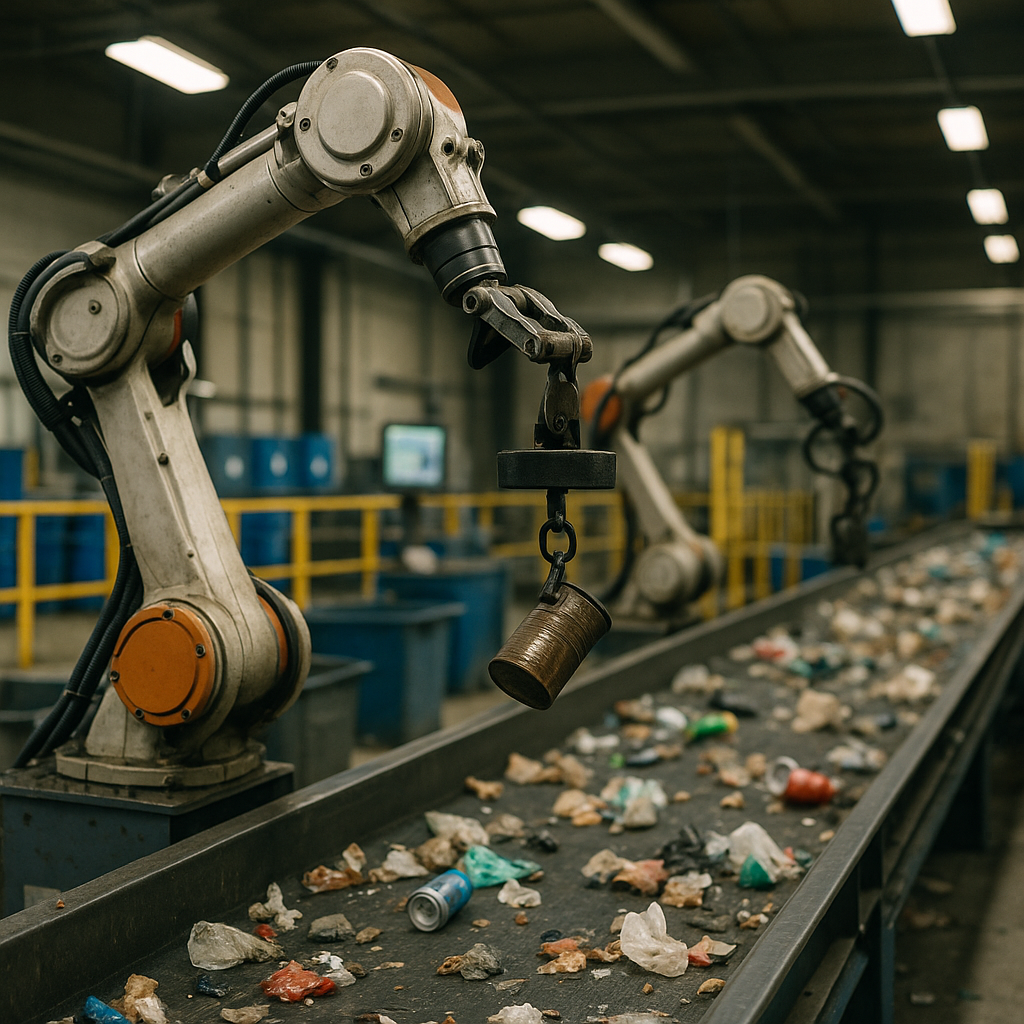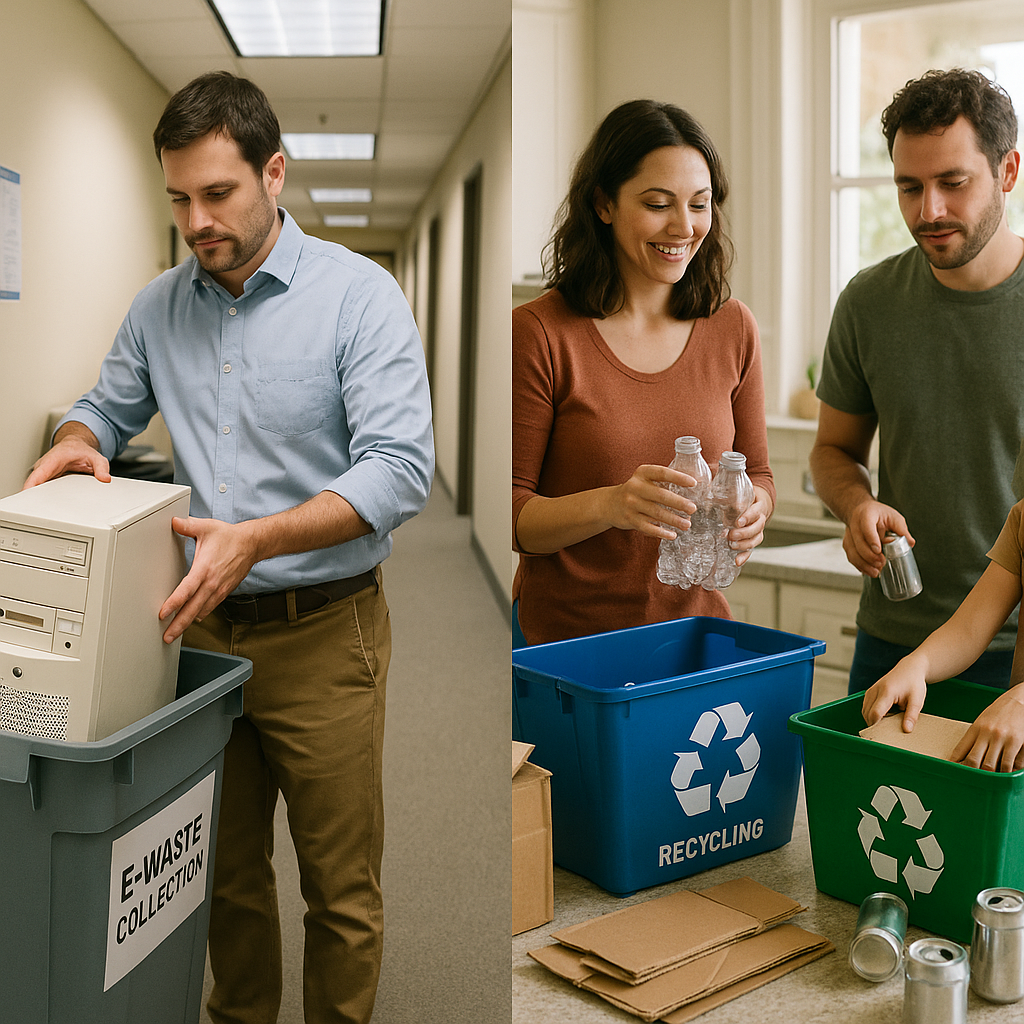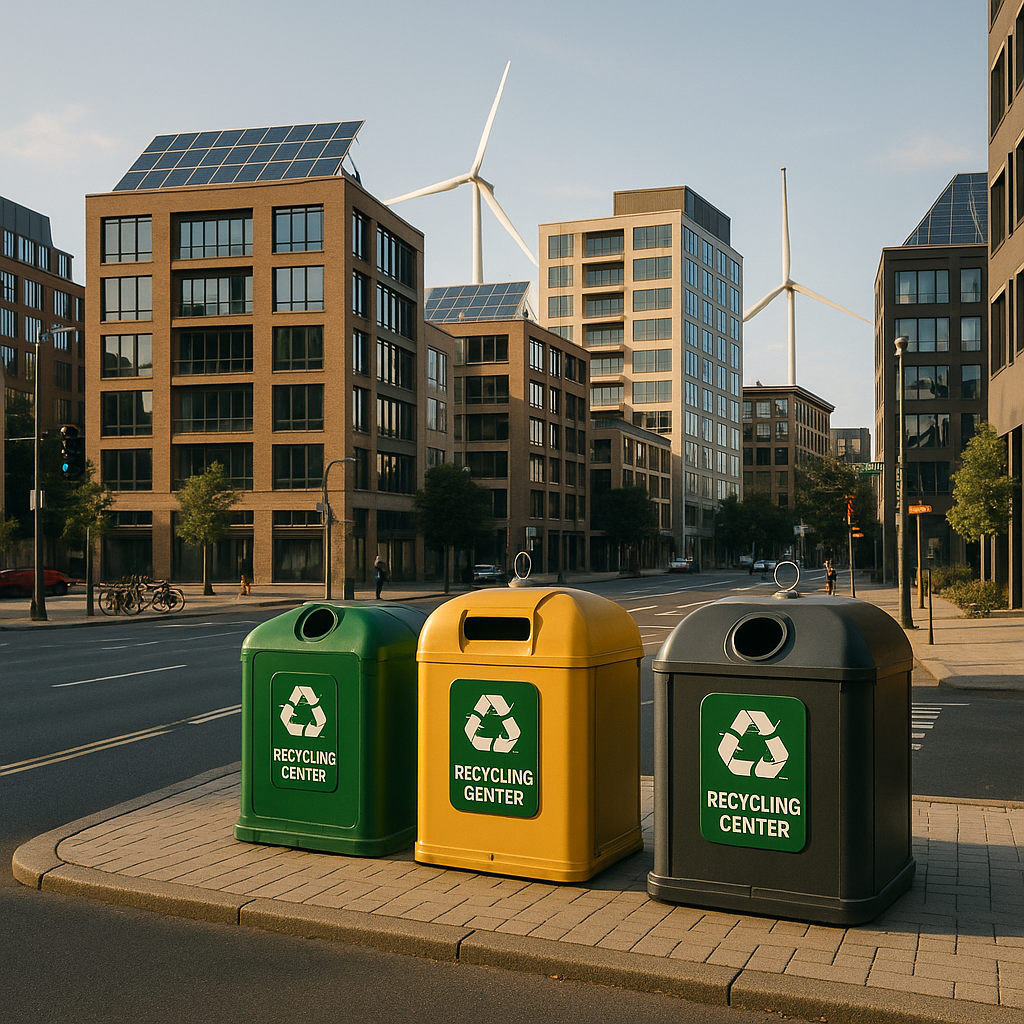5901 Botham Jean Blvd, Dallas, TX 75215
Eco-Friendly Solutions for Magnetic Waste Management
May 13, 2025Did you know that over 100,000 tons of rare earth magnets are produced annually, with demand expected to increase significantly by 2050? These powerful components are crucial to modern technology but pose significant environmental challenges when improperly discarded.
Eco-friendly magnetic waste management focuses on sustainable approaches to handling end-of-life magnets. These materials contain valuable rare earth elements like neodymium, dysprosium, and praseodymium. Traditional extraction of these elements involves destructive mining practices that generate toxic waste and consume substantial resources.
The environmental impact of rare earth mining is considerable. Processing just one ton of rare earth elements can produce around 2,000 tons of toxic waste. This environmental burden makes recycling not just advantageous but essential for sustainable technology development.
What are the Key Challenges in Magnetic Waste Recycling?

Magnetic waste recycling offers significant environmental benefits but faces hurdles that affect its broader adoption. The industry is working on solutions to enhance efficiency and economic viability.
Technical Complexity in Material Separation
Recycling magnetic materials involves complex chemical and metallurgical processes requiring specialized equipment and expertise. Separating valuable components from other materials presents significant technical challenges.
Many magnetic products contain multiple bonded materials, complicating separation. For instance, neodymium magnets are often coated or embedded in devices, needing precise extraction techniques to avoid contamination.
The presence of non-ferrous metals with weak magnetic properties can also reduce separation efficiency, necessitating continuous improvements in technology to handle complex waste streams.
Economic Viability Concerns
The cost-benefit equation is a major barrier to magnetic waste recycling. The process can be expensive, especially when magnets are embedded in complex products.
When the market value of recovered materials is low compared to mining costs, there’s little financial incentive for recycling, particularly without regulatory incentives or technological advancements to reduce processing costs.
Fluctuating prices of rare earth elements further complicate economic calculations, making it difficult to establish consistent recycling operations with predictable returns.
Logistical Issues in Collection and Transport
Collecting and transporting used magnets poses challenges. Magnetic materials are dispersed across various products and locations, complicating efficient collection.
The transportation of magnetic materials requires special handling to prevent unwanted interactions with surrounding equipment or materials, adding complexity and cost to logistics.
Many consumers and businesses lack awareness of proper disposal methods for magnetic materials, leading to valuable materials ending up in general waste streams instead of specialized recycling channels.
Energy-Intensive Processes
Recycling magnetic materials often requires substantial energy. Processes like demagnetization, hydrogen decrepitation, and reprocessing consume significant power, potentially offsetting environmental benefits.
High-temperature treatments needed for certain materials demand considerable energy. Pyrometallurgical methods, while effective, require extreme heat, contributing to their energy footprint.
The carbon footprint from these energy requirements must be managed to ensure recycling efforts benefit the environment. Renewable energy integration is crucial for sustainable operations.
Secondary Waste Generation
The recycling process can generate new waste forms. Chemical treatments in hydrometallurgical recycling may produce hazardous byproducts requiring management.
Acids and solvents used in extracting rare earth elements must be handled carefully to prevent contamination, necessitating their own treatment and disposal protocols.
Purification stages often yield residues containing non-target elements needing additional processing or disposal, adding complexity to recycling operations.
What Innovative Technologies are Emerging for Magnetic Waste Management?

The field of magnetic waste management is advancing rapidly with several groundbreaking technologies paving the way for more sustainable recycling practices. These innovations address longstanding industry challenges while creating new opportunities for resource recovery.
Hydrogen-Assisted Recycling
One of the most promising advancements in magnetic waste recycling is hydrogen processing of magnetic scrap (HPMS). This technology uses hydrogen to break down magnetic materials into reusable powder form without the environmental drawbacks of traditional methods.
The process involves placing pre-processed scrap containing magnets into a hydrogen vessel. The hydrogen reacts with the magnets to form an alloy powder while simultaneously demagnetizing it, allowing for easier separation of magnets from surrounding materials.
Once processed, the resulting powder can be directly remade into new magnets, remelted, or chemically processed. The UK-based company HyProMag plans to commission a chemical processing plant in Birmingham in 2024, with a recycling capacity of at least 100 tonnes of magnets annually.
Custom Magnet Solutions
Manufacturers are developing custom magnet solutions designed with end-of-life recyclability in mind. Custom AlNiCo magnets (aluminum-nickel-cobalt) and SmCo magnets (samarium-cobalt) represent significant advancements in this area.
These custom solutions involve engineering magnets using materials and manufacturing processes that facilitate easier recovery and reprocessing. AlNiCo magnets can be melted down to recover constituent metals for reuse in new magnet production. SmCo magnets offer exceptional corrosion and oxidation resistance while maintaining recyclability.
The development of these custom magnets supports a circular economy approach where materials continuously cycle back into production, reducing waste and the environmental impact associated with traditional magnet manufacturing and disposal.
Green Solvent Technologies
Traditional solvent-based recycling methods often rely on harsh chemicals that pose environmental hazards. Emerging green solvent technologies are changing this paradigm with more eco-friendly alternatives.
Researchers are exploring the use of biodegradable organic acids and ionic liquids as alternative solvents for extracting rare earth elements. These green chemistry approaches minimize environmental impact while maintaining extraction efficiency.
Ionic liquids—salts in a liquid state—have shown particular promise for extracting rare earth elements without generating hazardous waste. These solvents can achieve separations at lower temperatures than conventional methods, reducing energy consumption in the recycling process.
UK startup IonicTech exemplifies this approach with their liquid-liquid extraction technology that uses liquid salts and ligands to chemically separate rare earth elements from crushed magnets. Their demonstration plant in Belfast has been operating since January 2024, targeting an output of 10 tonnes of separated rare earth oxides annually.
Hybrid Recycling Systems
Beyond single-method approaches, hybrid recycling systems that combine different processing techniques are gaining traction. These integrated systems merge direct recycling, hydrometallurgical, and pyrometallurgical methods to optimize rare earth element recovery.
French rare earth refiner Carester is implementing a hybrid approach in its Caremag project. After mechanical processing, the permanent magnets undergo a combination of pyro-hydro processes followed by solvent extraction to separate rare earth elements.
Scheduled for commissioning in France by the first quarter of 2026, the Caremag plant aims to recycle 2,000 tonnes of rare earth magnets annually while processing 5,000 tonnes of heavy rare earth concentrates.
These hybrid systems achieve higher recovery rates and lower energy consumption than single-method recycling approaches, offering a more holistic solution to the complex challenges of magnetic waste management.
| Technology | Description | Key Advantages | Challenges |
|---|---|---|---|
| Hydrogen-Assisted Recycling | Uses hydrogen to break down magnetic materials into reusable powder form. | Reduces environmental impact; allows for easy separation of magnets. | Requires advanced technology and infrastructure. |
| Custom Magnet Solutions | Development of magnets designed for end-of-life recyclability. | Facilitates easier recovery and reprocessing; supports circular economy. | Initial design and production costs. |
| Green Solvent Technologies | Utilizes biodegradable solvents for extracting rare earth elements. | Minimizes environmental impact; reduces energy consumption. | Development and scalability of green solvents. |
| Hybrid Recycling Systems | Combines different processing techniques for optimal recovery. | Higher recovery rates; lower energy consumption. | Complex integration of multiple processes. |
| Automation and Robotics | Automated systems for sorting and processing waste magnets. | Improves precision and efficiency; reduces labor costs. | High initial investment in technology. |
Automation and Robotics
Advanced automation and robotics are revolutionizing the precision and efficiency of magnetic waste processing. Automated systems can sort, disassemble, and process waste magnets with greater accuracy than manual methods.
These technologies improve the quality of recycled materials while reducing labor costs. Automated dismantling is particularly valuable for extracting magnets from complex electronic devices where manual disassembly would be prohibitively time-consuming.
Companies like Okon Recycling utilize direct recycling methods that involve demagnetizing, dismantling, harvesting, and preparing rare earth magnets for reuse. With output reaching hundreds of tonnes of rare earth magnets annually, they demonstrate the industrial viability of advanced recycling techniques.
As these innovative technologies mature and scale, they promise to transform magnetic waste management from a challenging environmental problem into a sustainable resource recovery opportunity. The continuous advancement of these technologies will be crucial for building a truly circular economy for magnetic materials.
How Can Businesses and Consumers Contribute to Eco-Friendly Magnetic Waste Management?

Businesses significantly impact the future of magnetic waste management through thoughtful product design. Companies can engineer products for easy disassembly, facilitating the extraction and recycling of valuable magnetic components at the end of a product’s life. This approach conserves rare earth elements and reduces the need for environmentally harmful mining operations.
Design modifications to enhance recycling include using standardized magnet sizes, avoiding permanent adhesives, and clearly labeling magnetic components. These changes can greatly improve recycling efficiency and material recovery rates.
Implementing take-back programs is another effective strategy for businesses. By accepting their products back after use, companies ensure proper handling of magnetic materials, creating a closed-loop system where valuable components return to the manufacturer instead of ending up in landfills.
Some industry leaders offer incentives for product returns, such as discounts on new purchases or rebate programs. These incentives boost participation rates and demonstrate corporate commitment to environmental responsibility.
Using recycled magnetic materials in new manufacturing processes completes the circular economy approach. Businesses sourcing recycled neodymium, samarium-cobalt, or aluminum-nickel-cobalt reduce extraction demands while often achieving cost savings. As recycling technologies improve, the quality and availability of these materials continue to increase.
For consumers, proper disposal of electronics containing magnets is crucial in preventing magnetic waste pollution. Instead of discarding old devices in regular trash, consumers should research local e-waste collection points or specialized recycling facilities. Many communities host collection events for electronic waste, offering convenient disposal options.
Consumers can also influence the market by supporting products made with recycled materials. Prioritizing brands using recycled magnetic components sends a clear message to manufacturers that sustainability matters, driving innovation toward environmentally friendly practices.
Community awareness campaigns amplify individual actions. Consumers can educate others about the importance of magnetic waste recycling through social media, community forums, or local environmental groups, expanding the impact of personal choices.
Participating in public policy discussions is another way consumers can contribute. Supporting regulations promoting responsible magnetic waste management, such as extended producer responsibility programs, helps create systemic change. Letters to representatives, signing petitions, or speaking at community meetings strengthen the collective voice for environmental protection.
Business-consumer partnerships offer a promising path forward. When companies listen to customer concerns about sustainability and customers support businesses making genuine environmental efforts, the result is a powerful alliance for positive change.
Educational workshops provide an effective venue for these partnerships. Businesses can host events explaining their recycling initiatives, while consumers learn about proper disposal methods. These interactions build mutual understanding and shared commitment to addressing magnetic waste challenges.
Recycling cooperatives represent another collaborative approach, where businesses and community members work together to collect, sort, and process magnetic waste. These organizations create local jobs and ensure proper handling of materials that might otherwise pollute the environment.
For businesses seeking to improve magnetic waste management, partnering with specialized recycling services often provides the most efficient solution. These services have the expertise and equipment to properly process magnetic materials, ensuring maximum recovery of valuable components.
Both businesses and consumers benefit from transparency in recycling processes. Clear information about how magnetic materials are handled after collection builds trust and encourages participation in recycling programs. Companies sharing details about their recycling outcomes demonstrate accountability and educate consumers about environmental impacts.
Government incentives can accelerate eco-friendly practices for both groups. Tax benefits for businesses implementing recycling programs or rebates for consumers who properly dispose of electronic waste create financial motivation aligned with environmental goals. Advocating for these policies is a shared responsibility.
Lastly, investing in research and development of new recycling technologies benefits the entire magnetic waste ecosystem. Businesses funding innovation and consumers supporting these forward-thinking companies advance solutions to technical challenges in magnetic material recovery.
Through these complementary approaches, businesses and consumers can transform magnetic waste from an environmental liability into a valuable resource stream. The resulting reduction in pollution, conservation of rare earth elements, and progress toward a circular economy serve everyone’s long-term interests.
Conclusion: The Future of Eco-Friendly Magnetic Waste Management

As the demand for NdFeB magnets grows across industries such as clean energy and consumer electronics, managing these resources sustainably becomes increasingly important. The future lies in advancing recycling technologies like hydrogen decrepitation and magnet-to-magnet processes, which significantly reduce environmental impacts compared to primary production. Supportive policies, including Extended Producer Responsibility frameworks and recycling mandates, will be crucial in creating economically viable recycling ecosystems that preserve these valuable resources.
Creating a truly circular economy for magnetic materials requires coordinated efforts from industry, governments, and research communities. Whether managing magnet waste from EVs, wind turbines, or electronics, contact Okon Recycling at 214-717-4083 to explore sustainable solutions that turn waste challenges into environmental opportunities.
